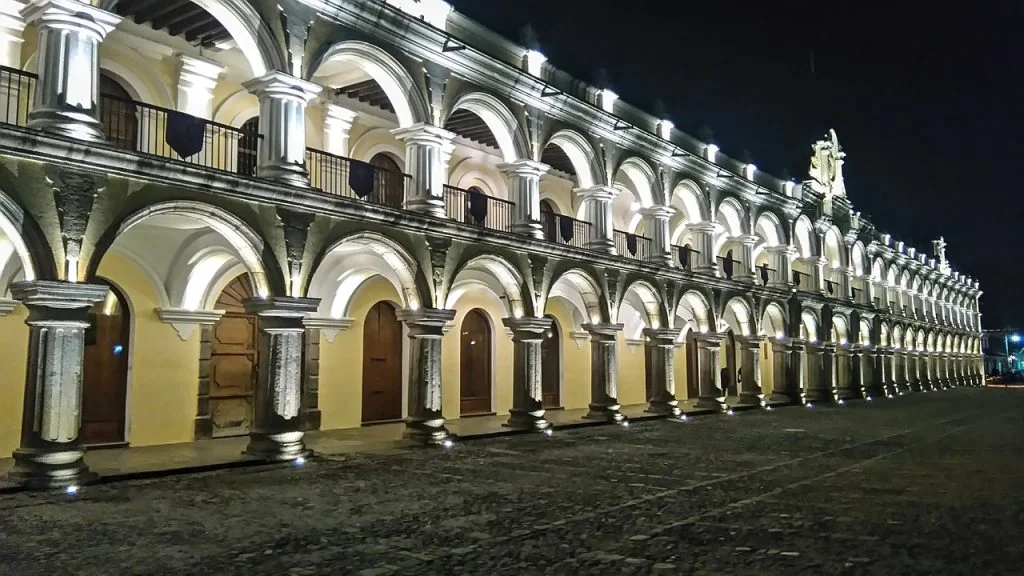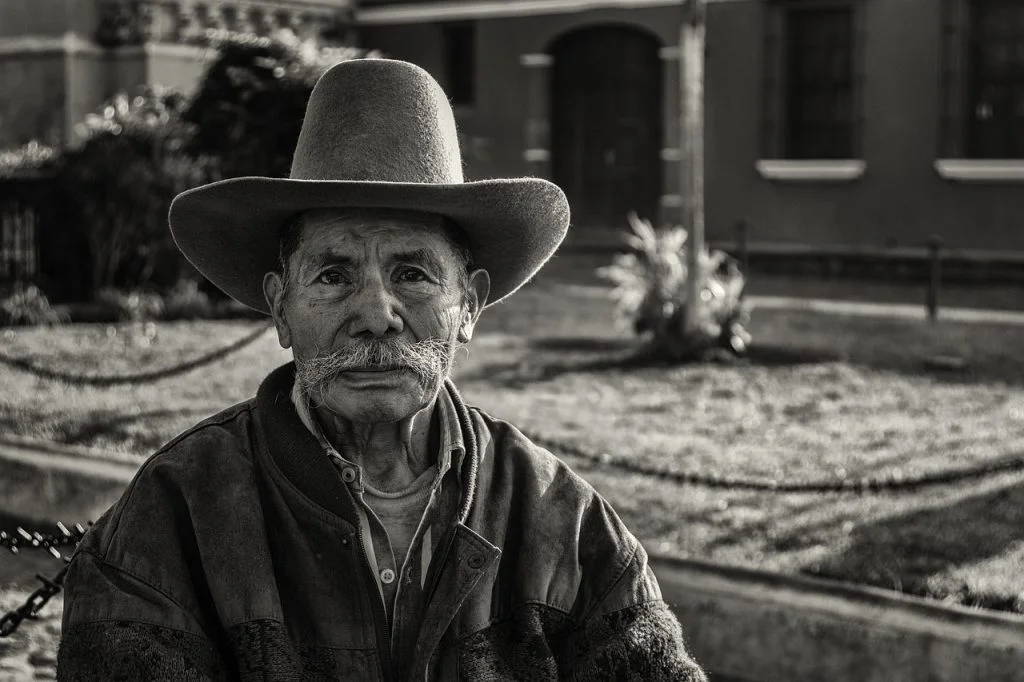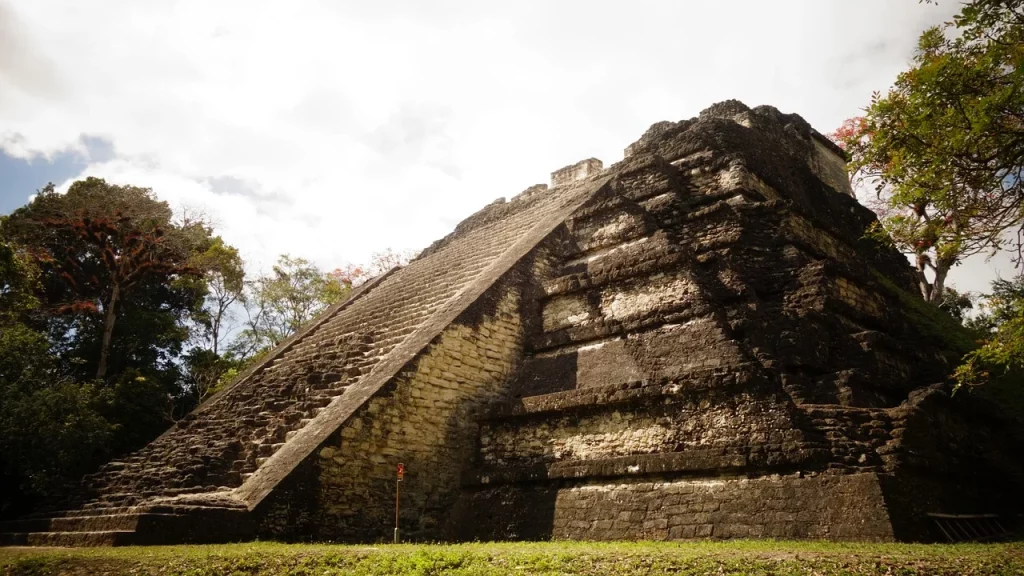Nestled in the heart of Central America, Guatemala is a country that’s as rich in humor as it is in culture. Imagine a place where volcanoes play hide and seek with the clouds and ancient ruins are as common as traffic jams.
Here, the coffee is as strong as the local spirit, and the colorful streets seem to be painted by a particularly cheerful rainbow. Have you ever seen a chicken bus? If not, you’re missing out! In Guatemala, these rolling works of art make every journey an adventure.
Guatemala is more than a country; it’s a world within itself.
Luis Cardoza y Aragón
Guatemala Facts
Dive into the vibrant world of Guatemala with me! Read carefully, as each fact weaves into the beautiful tapestry of this country’s story. And don’t forget, a quiz awaits at the bottom of the page to challenge your knowledge of Guatemala.
- Guatemala is located in Central America, bordered by Mexico, Belize, Honduras, and El Salvador.
- The country’s official name is the Republic of Guatemala.
- Guatemala’s capital city is Guatemala City, which is also the largest city in Central America.
- The Mayan civilization flourished in Guatemala and surrounding regions during the first millennium A.D.
- Guatemala gained independence from Spain on September 15, 1821.
- The Guatemalan Civil War, fought from 1960 to 1996, was one of the longest civil wars in Latin American history.
- Guatemala’s currency is the Quetzal, named after the national bird.
- The Quetzal bird is known for its vibrant colors and long tail feathers.
- Guatemala is home to 22 indigenous languages, predominantly of Mayan origin.
- The Mayan ruins of Tikal are a UNESCO World Heritage Site and one of Guatemala’s most visited locations.
- Guatemala’s population is diverse, with a mix of Mestizo (mixed indigenous and European) and indigenous peoples.
- The Volcán de Fuego, one of Central America’s most active volcanoes, is located in Guatemala.
- Guatemala is known for its rich coffee production, which is a major part of the economy.

- Lake Atitlán, formed in a massive volcanic crater, is renowned for its natural beauty and is a popular tourist destination.
- The Guatemalan Highlands are known for their cool climate and mountainous landscapes.
- The Marimba, a type of xylophone, is considered the national instrument of Guatemala.
- Guatemala’s traditional dress, known as traje, varies greatly between indigenous communities.
- The Chichicastenango Market is one of the largest and most vibrant indigenous markets in Central America.
- Guatemala’s national flower is the Monja Blanca (White Nun orchid).
- Semana Santa (Holy Week) in Antigua Guatemala is famous for its elaborate religious processions and intricate sawdust carpets.
- Guatemala is one of the world’s leading producers of Jade.
- The Garífuna community, descendants of African, Carib, and Arawak people, contributes significantly to Guatemala’s cultural diversity.
- El Mirador is a large pre-Columbian Mayan settlement, known for having some of the largest pyramids in the world.
- The Guatemalan Peace Accords were signed in 1996, officially ending the civil war.
- Guatemala’s national dish is Pepian, a spicy stew often made with chicken, beef, or pork.
- Lago de Izabal is Guatemala’s largest lake, located near the Caribbean coast.
- The Ceibal site, situated on a low hilltop overlooking the Pasión River, is known for its well-preserved Mayan stelae and ceramics.
- Rigoberta Menchú, a K’iche’ Maya woman from Guatemala, won the Nobel Peace Prize in 1992 for her work in social justice and ethno-cultural reconciliation.

- Quetzaltenango, Guatemala’s second-largest city, is a cultural hub known for its colonial architecture and vibrant student population.
- The Guatemalan Worry Dolls, also known as “trouble dolls”, are a traditional handmade craft believed to alleviate worries when placed under one’s pillow at night.
- Guatemala’s diverse ecosystems range from tropical rainforests to mountain cloud forests, offering habitat for a wide variety of wildlife.
- The Biotopo del Quetzal is a nature reserve specifically created to protect the habitat of the national bird, the Quetzal.
- El Pilar is an ancient Mayan city located across the border between Belize and Guatemala.
- The Pacaya Volcano, close to Guatemala City, is a popular spot for hiking and observing volcanic activity.
- Guatemalan textiles are renowned for their vibrant colors and intricate patterns, reflecting a rich weaving tradition among indigenous women.
- The GuateMaya is a cultural movement emphasizing the Maya identity and traditions within the Guatemalan society.
- The Cobán Rainforest is known for its rich biodiversity and is home to the annual National Orchid Festival.
- Zaculeu is an ancient Mayan archaeological site known for its well-preserved temples and plazas, located near the city of Huehuetenango.

- The Guatemalan Black Howler Monkey, one of the few monkey species native to the country, is found in the rainforests of Petén.
- Río Dulce, a river in eastern Guatemala, is famous for its natural beauty and is a popular destination for boating and ecological tourism.
- The Festival Folklórico Nacional in Cobán is a major annual event celebrating indigenous cultures and traditions.
- Guatemalan Sign Language is used by the deaf community and is distinct from other sign languages.
- Fiambre, a traditional Guatemalan dish, is served on All Saints’ Day and features a mix of over 50 ingredients.
- The National Museum of Archaeology and Ethnology in Guatemala City houses an extensive collection of Mayan artifacts.
- Quiriguá is an ancient Mayan city known for its well-preserved series of stone stelae and zoomorphic sculptures.
- Montaña Yalijux, located in Alta Verapaz, is a significant site for cloud forest biodiversity and bird watching.
- The Guatemalan film industry is small but growing, with films often focusing on social and cultural themes.
- San Pedro La Laguna on Lake Atitlán is known for its backpacker scene and indigenous Tz’utujil Mayan community.
- The Rabinal Achí, a traditional dance-drama, is a UNESCO Masterpiece of the Oral and Intangible Heritage of Humanity.
- Guatemala is a major exporter of vegetables and fruits, including bananas, melons, and green beans.
Guatemala Myths

We finished exploring all these interesting facts about Guatemala, and now it’s time to focus on some myths about this country. Let’s see together what the actual truth is behind them.
- Guatemala is Mostly Desert and Dry
Contrary to the common belief that Guatemala is predominantly deserted and dry, the country actually boasts diverse climates. It’s home to lush rainforests, mountainous regions, and even a bit of coastline, offering a variety of landscapes. This diversity is a point of pride for Guatemalans. - Guatemalan Cuisine Is Limited to Tacos and Burritos
While tacos and burritos are popular in many Latin American countries, Guatemalan cuisine is much more diverse. It includes unique dishes like Pepian, a rich and hearty stew, and Kak’ik, a traditional turkey soup. - Spanish is the Only Language Spoken in Guatemala
Guatemala is a linguistically rich country, with Spanish being just one of many languages spoken. There are over 20 different Mayan languages in regular use, each with its own unique cultural and linguistic heritage. It’s like a symphony of languages! - Guatemala Has Little Historical Significance
Guatemala is actually steeped in history! It was the cradle of the ancient Mayan civilization, which left behind incredible archaeological sites like Tikal and Yaxha. These sites are not just tourist attractions; they’re a source of pride and connection to a rich past for Guatemalans. - Guatemalans are Primarily Rural Farmers
While agriculture is an important part of the economy, Guatemala also has bustling cities and a growing industrial sector. Places like Guatemala City and Antigua showcase a blend of modernity and tradition. The country’s economic landscape is as varied as its physical one!
No products found.
Guatemala Quotes

Explore the cultural richness and wisdom of Guatemala through insightful quotes that capture the essence of its vibrant traditions, indigenous heritage, and the resilient spirit of its people. Here is a list of my favorites:
In Guatemala, the air is filled with the spirit of the Mayans.
Miguel Ángel Asturias
Miguel Ángel Asturias, a Guatemalan Nobel Prize-winning novelist and diplomat, reflects the deep historical and cultural influence of the Mayan civilization in Guatemala.
The beauty of Guatemala lies in its colors and its people.
Rigoberta Menchú
Rigoberta Menchú, an indigenous Guatemalan woman who received the Nobel Peace Prize for her work in social justice, celebrates the vibrant culture and the warmth of the Guatemalan people.
Guatemala is a symphony of natural beauty.
Jaime Viñals
Jaime Viñals, a famous Guatemalan mountaineer and explorer, emphasizes the breathtaking landscapes and natural wonders of Guatemala.
Every corner of Guatemala tells a story of time and tradition.
Carlos Mérida
Carlos Mérida, a prominent Guatemalan painter known for his fusion of European and American themes, captures the rich history and traditions embedded in every part of Guatemala.
Guatemala’s struggle and resilience are as inspiring as its beauty.
Helen Mack
Helen Mack, a Guatemalan human rights activist and defender, acknowledges the challenging history of Guatemala and the resilience of its people.
Guatemala FAQ

Let’s continue with some common questions that you will find online about Guatemala. Remember to read carefully because the quiz is just ahead. Don’t disappoint me.
- What is Guatemala famous for?
Guatemala is renowned for its rich cultural heritage, especially its strong Mayan roots and Spanish colonial history. It’s a vibrant tapestry of ancient ruins, like the world-famous Tikal, colorful indigenous markets, and stunning natural landscapes, including volcanoes, lakes, and rainforests. Guatemala’s cultural richness is also reflected in its textiles, traditional dances, and music. - Who colonized Guatemala?
Guatemala’s history is deeply intertwined with Spanish colonization. The Spanish conquest of the region began in the early 16th century, led by conquistador Pedro de Alvarado. This period marked significant changes in the region, introducing European culture, language, and religion, which reshaped the societal structure and left a lasting impact on the country’s identity. - What’s Guatemala’s currency?
The currency of Guatemala is the Guatemalan Quetzal, named after the national bird, the Resplendent Quetzal. This bird is known for its vibrant colors and is a symbol of freedom and wealth. The currency, denoted as GTQ, reflects the country’s distinct identity and its pride in its natural and cultural heritage. - What is the climate like in Guatemala?
Guatemala is often called the “Land of Eternal Spring” due to its pleasant climate. The country enjoys a tropical climate, but it varies considerably by altitude and region. The coastal areas and lowlands are typically hot, while the highlands are cooler. The rainy season runs from May to October, providing lush, green landscapes, a treat for nature lovers. - What are some popular Guatemalan dishes?
Guatemalan cuisine is a feast for the senses, blending indigenous Mayan and Spanish influences. Some must-try dishes include ‘Pepián‘, a rich, spicy stew often made with chicken, beef, or pork; ‘Pupusas‘, stuffed tortillas; and ‘Kak’ik‘, a traditional turkey soup spiced with coriander, achiote, and chilies. Each dish tells a story of Guatemala’s cultural fusion and agricultural bounty.
No products found.
Guatemala Trivia

Get ready for the ‘Great Guatemala Challenge‘! Warning: scoring zero might result in being haunted by a quetzal who will squawk Guatemalan facts at you all day!
Conclusion
Our journey through the landscape of Guatemala is over. It’s impossible not to be moved by its rich tapestry of culture, history, and natural beauty. From the ancient ruins of Tikal, whispering tales of the Maya, to the colorful markets of Chichicastenango, every corner of Guatemala tells a unique story.
This country not only offers a glimpse into a past civilization but also presents a vibrant, living culture that continues to thrive today. But beyond its physical beauty and cultural richness, it’s the resilience and warmth of the Guatemalan people that truly capture the heart.
Their unwavering spirit in the face of challenges is a testament to the enduring human spirit. As you reflect on this journey, ask yourself: How can the lessons of Guatemala’s past and the resilience of its people inspire you in your own life? Let me know in the comments.
3 Sources Used For This ArticleGuatemala vs. Belize: 8 Differences For Planning Your Trip – Pina Travels
Visiting The Quirigua Mayan Ruins In Guatemala – Growing Up Bilingual


